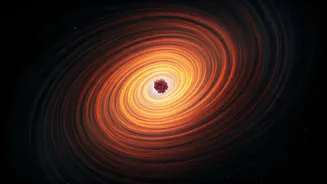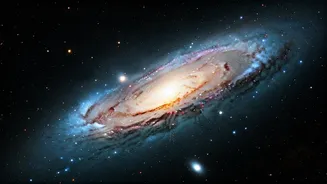Dark Matter's Secrets
Dark matter, an elusive substance that makes up a significant portion of the universe, has always intrigued scientists. Despite its substantial presence,
it remains invisible to the naked eye. Scientists are continually striving to observe and measure dark matter, to uncover how it functions and interacts with the observable universe. Research efforts are consistently aimed at directly detecting dark matter particles or learning more about their effects on cosmic structures. This particular discovery potentially allows for deeper comprehension of dark matter's nature and the way in which it influences galaxy formation and the cosmos as a whole. Comprehending dark matter could bring us closer to understanding the universe's ultimate destiny.
The Tiny Clump Found
The scientific community is buzzing over the reported discovery of what may be the smallest known dark matter clump. Its density, estimated to be a million times greater than the sun's, presents a radical contrast to the more diffuse arrangements generally hypothesized. This extraordinary density leads to novel potential avenues of investigation into the nature and behavior of dark matter. The finding suggests that dark matter may be concentrated in unexpected and remarkably compact regions, which contrasts previous theories. This has the potential to reveal new insights into the interaction of dark matter with ordinary matter, and the development of galaxies.
Implications and Future Research
This groundbreaking discovery holds immense significance for the field of astrophysics. The identification of such a dense dark matter clump may refine the models scientists use to represent the structure and evolution of the universe. The enhanced comprehension of dark matter’s behaviour allows scientists to make more precise predictions regarding galactic formations and how the universe changes over vast cosmic time scales. Future research will likely center on confirming these findings through additional observations, and exploring the possibilities that the dense dark matter clump represents. Scientists are expected to use cutting-edge telescopes and sophisticated simulations to understand the clump's properties, interactions, and distribution in more detail. The knowledge acquired promises to revolutionize our grasp of the cosmic landscape and the fundamental nature of matter itself.








